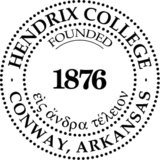Problem B
A Rational Sequence 2
A sequence of positive rational numbers is defined as follows:
An infinite full binary tree labeled by positive rational numbers is defined by:
-
The label of the root is $1/1$.
-
The left child of label $p/q$ is $p/(p+q)$.
-
The right child of label $p/q$ is $(p+q)/q$.
The top of the tree is shown in the following figure:
![\includegraphics[]{f1.png}](/problems/rationalsequence2/file/statement/en/img-0001.png)
The sequence is defined by doing a level order (breadth first) traversal of the tree (indicated by the light dashed line). So that:
\[ F(1) = 1/1, F(2) = 1/2, F(3) = 2/1, F(4) = 1/3, F(5) = 3/2, F(6) = 2/3, \ldots \]Write a program which finds the value of $n$ for which $F(n)$ is $p/q$ for inputs $p$ and $q$.
Input
The first line of input contains a single integer $P$, $(1 \le P \le 1000)$, which is the number of data sets that follow. Each data set should be processed identically and independently. Each data set consists of a single line of input. It contains the data set number, $K$, a single space, the numerator, $p$, a forward slash (/) and the denominator, $q$, of the desired fraction.
Output
For each data set there is a single line of output. It contains the data set number, $K$, followed by a single space which is then followed by the value of $n$ for which $F(n)$ is $p/q$. Inputs will be chosen so $n$ will fit in a $32$-bit integer.
| Sample Input 1 | Sample Output 1 |
|---|---|
4 1 1/1 2 1/3 3 5/2 4 2178309/1346269 |
1 1 2 4 3 11 4 1431655765 |
